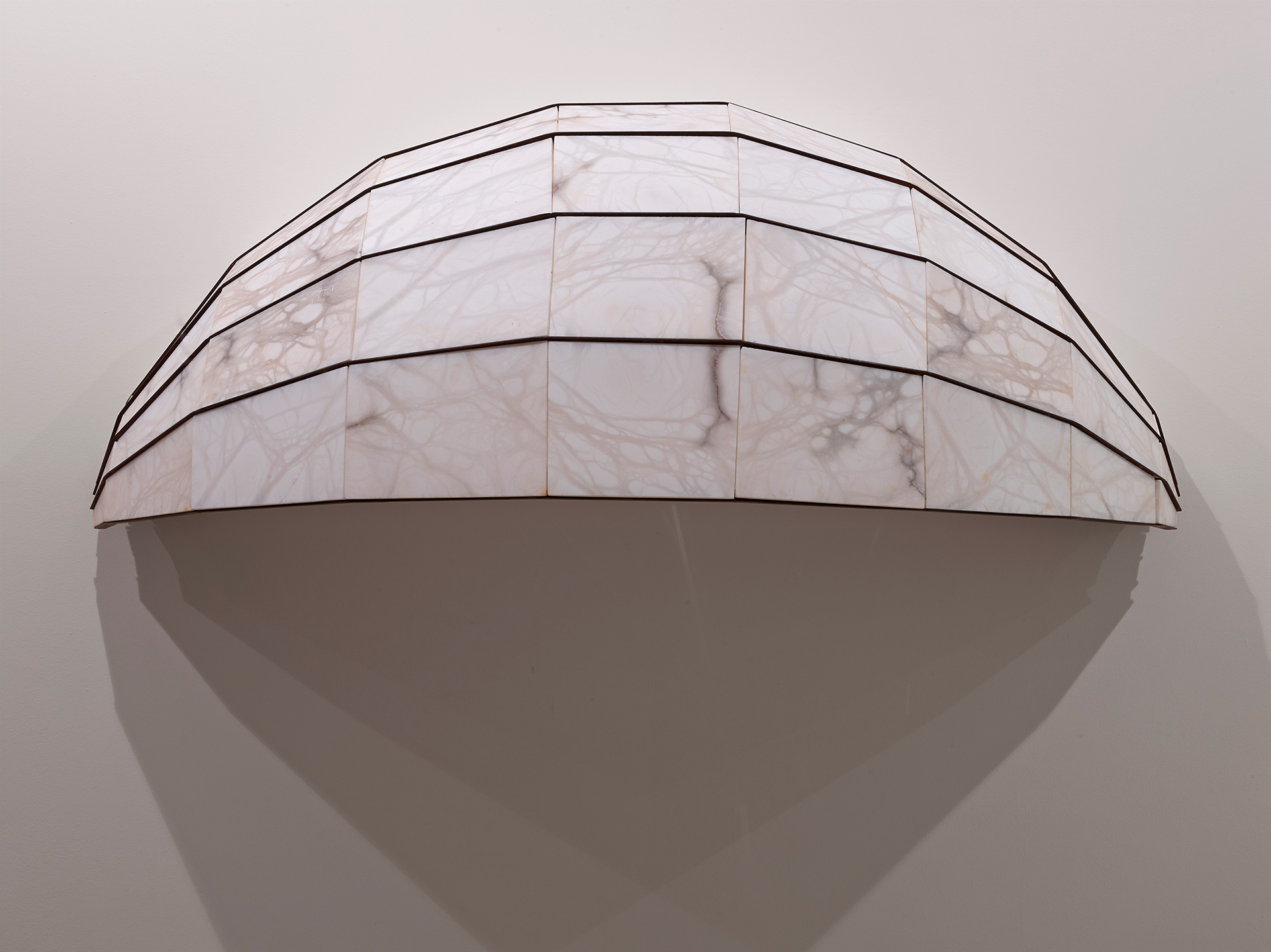
Cristina Iglesias (San Sebastián, 1956)
Untitled
1990
WORK INFORMATION
Alabaster, 90 × 198 × 80 cm
There is a great deal of architectural sculpture in Cristina Iglesias's work, of spaces that intersect, branch off and cancel each other out, spaces that sometimes resemble the sea and sometimes the forest and are suddenly canvas and surface. Yet to be more precise, rather than adapting to spaces, Iglesias's works create spaces that envelop spectators and gradually construct an unexpected, magical three-dimensional meaning, capable of transporting visitors to an experience of mingled sensations.
Dancing lights and shadows, camouflaged narratives, trompes l'oeil in the finest Spanish Baroque manner, the Velazquezian tradition of revelations and concealments... these are just some of the elements in the incredibly rich vocabulary of this sculptor, one of the most remarkable artists of her generation with a genuine talent for "taking over" territories—it is no coincidence that her production includes numerous "public sculpture" projects, such as the doors to the new wing of the Museo del Prado. Iglesias possesses, first and foremost, the ability to construct spatial disruptions and perform a certain systematic revision of materials, one of her crowning achievements, especially in the plant accumulations that frequently confront her spectators with a paradox: the vision of a deep forest that flirts with the idea of a distant seascape. Any material, from iron to tapestries, can ultimately be accommodated in the artist's work, which over the years has delimited her themes with a highly personal poetics.
The works in the Banco Santander Collection summarise some of the abovementioned aspects in a period of approximately fifteen years. In the early alabaster piece from 1990, Iglesias created a strange dwelling space, a new concept of place that is also defined by light thanks to the transparent quality of the material she used. This effect, similar to that of a medieval stained-glass window, is what makes the piece seem like a floating space, the same kind of space that reappears in Pasadizos vegetales [Plant Passageways], where we find the vegetation wielded so skilfully by Iglesias in those years. Her aim was to build a structure with an impressive metal forest growing inside which, as in so many of Iglesias's works, requires the spectator's collusion to penetrate those ambiguous, mysterious spaces that resort to unexpected, rare plants. These specimens are similar to the catalogue of bizarre made-up plants found in the novel Against Nature by Joris-Karl Huysmans, one of the favourite authors of this sculptor who frequently incorporates explicit or implicit allusions to literature in many of her creations. [Estrella de Diego]

